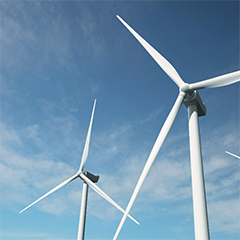Wind energy is proven to be a reliable way of producing clean renewable energy, and the net inflow of financial investors reflects that the industry has matured. Wind energy is clean and safe and simply constitutes a smart investment. The business will, however, see some challenges going forward. Generating new electricity has always depended on national support schemes whether it has been carbon-based or generated by renewable sources.
Wind and solar will be the first renewable technologies to break this barrier in reaching the point where they can operate continuously and profitably without public subsidy. To ensure business sustainability, it will be increasingly important to continue and develop further efforts to reduce investment requirements and operating costs. Wind turbines will continue to grow in size. The components and the forces applied to the turbines will continue to grow. Which is why increasing our knowledge and understanding of how turbines operate and function is the key to reducing costs, especially as the wind business enters a critical transformative period.
Integrated operations
Data is increasingly driving the understanding of wind farms and their day-to-day operations. Various control and monitoring systems are available for all aspects of a wind turbine, from planned maintenance to lifecycle management. However much of this technology comes from different vendors, and this can lead to a mix and match approach to digitalisation and therefore negate the efficiency gains of deploying the technology in the first place.
It’s in this context that oil and gas, maritime and renewable energy technology specialist KONGSBERG developed its integrated approach to wind farm management systems. The Kongsberg EmPower decision-support solution is an integrated software suite, developed to bring the digital power plant closer to the operator and turbine owners.
The key word is integration. Integrating information from disparate sources through the help of advanced analytics coalesces it into a single system, making it possible to improve EHS, gain a deeper understanding of contractual obligations, and acquire profound insight into a wind farm’s capabilities.
From a management perspective, an integrated solution can tell operators who is where and what they are doing at any time, ensuring efficient distribution of a workforce for both planned and unscheduled maintenance. Crucially, the system also provides real-time data on the condition and performance of the wind turbines, contributing to more effective planned maintenance and support.
Additionally, easy look-up of contractual obligations is integral to the system, ensuring that information on what needs to be delivered at any time and indeed, information on what the penalties are if alternatives have to be evaluated, is always available.






























